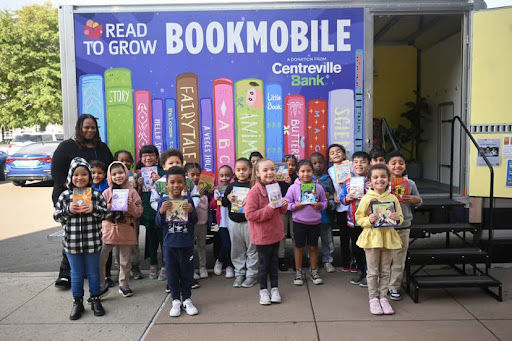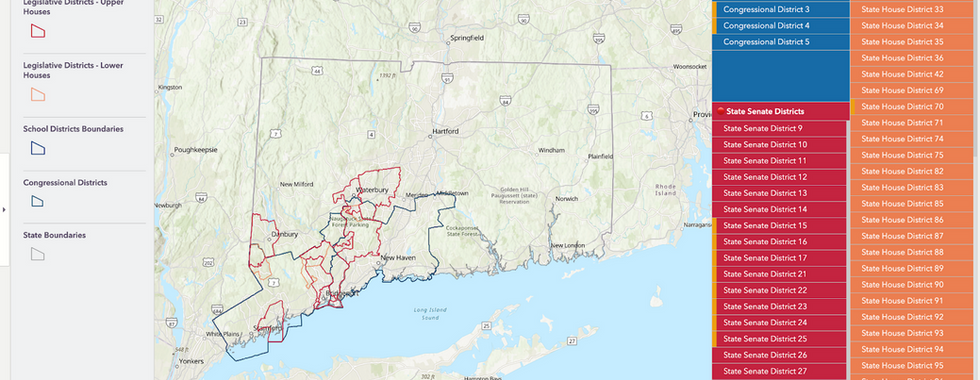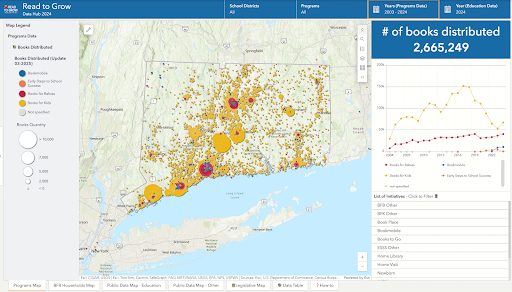Data-Driven Impact: the Read to Grow Playbook
- Ana Ranković
- Aug 24
- 4 min read
Updated: Aug 27
What does it mean for a non-profit to be truly data-driven?
We’re convinced it starts with strong public and programmatic data, followed by the ability to turn that data into clear insights, and ultimately using those insights to guide strategy and craft compelling stories that drive action. Achieving this requires both persistence and skill, which is why we’ve spent the last few years building a suite of services designed precisely to support this vision:
Designing and developing new data collection tools and methodologies
Enhancing measurement & evaluation frameworks to get better at defining impact
Deploying advanced geospatial tools and dashboards for accessible data insights
Crafting compelling, data-driven stories to power advocacy, drive action, and increase fundraising

We’ve long dreamed of the day we could bring this full vision to life.
Enter Read to Grow.
Over the past year, we’ve had the absolute pleasure of partnering with this brilliant early literacy nonprofit in Connecticut, helping them weave their data, programs, and impact into one powerful story. Across three major projects (and plenty of laughs along the way), this has become one of our most creative and rewarding collaborations — and we couldn’t be prouder of what we built together.
Our work with North Arrow has elevated Read to Grow’s work internally and externally. Our data dashboard is a resource that few other nonprofits in the early childhood space have currently and the maps have led to RTG being invited into conversations with state agencies and legislators in ways RTG had not been involved with previously. While our mission and focus remains early literacy, we cannot do this work in a vacuum and the mapping work that makes visible related social determinants fundamentally changes the conversation about how we improve outcomes for children and families. Suzannah Holsenbeck, Executive Director
Where We Started
Read to Grow has been doing the work for decades, getting books into the hands of kids across Connecticut, starting at birth and continuing through early childhood. They have distributed a staggering 2.5M books in the last 20 years, and reached hundreds of thousands of households. But as their programs grew, so did the complexity behind them.

They had data, but no clear way to step back and see the full picture. Programs were tracked separately, success was hard to show at scale, and big decisions relied on instinct more than insight. For instance, their Bookmobile (a beautiful, colorful truck packed with the best kids literature) was going where it was requested, not necessarily where it was most needed.
What they needed wasn’t just a map. They needed a way to connect all the moving parts, to see what was working, where the gaps were, and how to plan for what’s next.
Three Projects, One Strategy
Laying the Groundwork
We started with the basics, helping Read to Grow see where their work was happening and where it was not. By combining their program data with public indicators such as poverty rates, education levels, and family structure, we built a live map that gave them a full view of their reach across the state.
For the first time, the team could move beyond spreadsheets and gut feeling. They could see patterns, spot gaps, and start asking new kinds of questions. Where are we showing up the most? Where are we missing? What else do these communities need?
Translating Insight into Storytelling
Once the team could see where their work was landing, the next step was helping them share that story. We built a map-powered public-facing interactive impact tour that turned data into something people could understand, maps, timelines, and milestones that showed how Read to Grow supports children from birth through school age.
Instead of treating each program as a standalone effort, the platform showed how everything connects into a continuum of services that spans not only the first years but the entire childhood of the kids served. It gave funders and partners a clearer view of the big picture, and gave the team a tool they could use to advocate, explain, and grow.
Charles and Olivia [...] have thoughtfully gathered input and data and gently guided us on how to showcase our results in the most impactful way... Their efforts have significantly improved how Read to Grow illustrates our work in early childhood literacy. Paula Grimm, Data Director

Measuring What Matters
For their final challenge, we worked with the team to rethink how they track and understand their impact. They had plenty of data but no clear system for turning it into insight they could use.
We helped them audit what they were measuring, cut what wasn’t useful, and design a new framework that linked everyday metrics to long-term goals. Then we built the tools to bring it to life, including dashboards, data collection systems, and reporting processes the whole team could use.
Evaluation became part of the work, not a task at the end. It gave the team a way to reflect, adjust, and keep moving forward with confidence.
This work has significantly enhanced our ability to set meaningful goals, assess our strengths, and identify areas for growth, enabling me to manage programs more efficiently. Kascia Williams, Program Director
A Partnership That Grew With the Work
This wasn’t just a one-off build. We spent the year embedded with the Read to Grow team, joining planning meetings, asking tough questions, learning their programs, and understanding the realities they face on the ground.
Because of that time together, we were able to design tools that actually worked for their day-to-day. Tools that reflected their values, their voice, and the communities they serve.
And we’re still working together. Right now, we’re mapping reading deserts across Connecticut to help them better target underserved areas and make the case for a second Bookmobile. The work keeps evolving, and so does the partnership.
The Journey Continues
At its core, this project was about making it easier for a team to do what they already do well. Each piece we built—the geospatial hub, the impact platform, the evaluation system—was designed to help Read to Grow work smarter, communicate more clearly, and plan with confidence.
If you believe in the importance of early literacy and want to support an organization that’s combining grassroots effort with thoughtful strategy, consider getting involved with Read to Grow. You can learn more about their programs or make a donation at readtogrow.org.















Comments